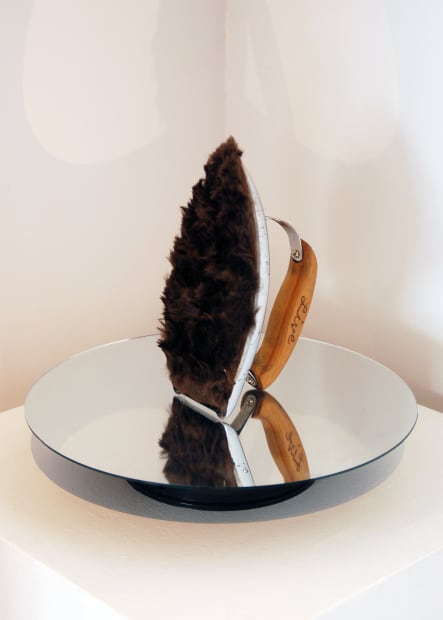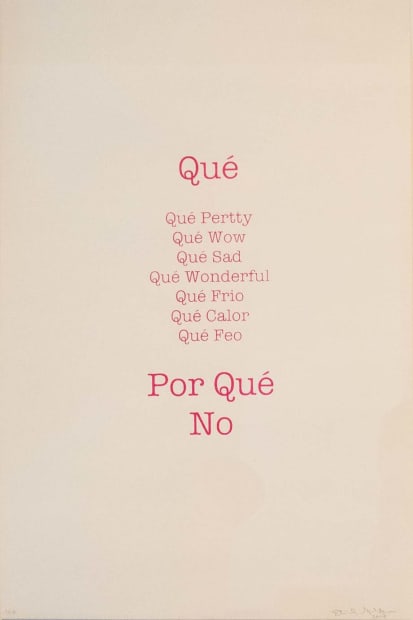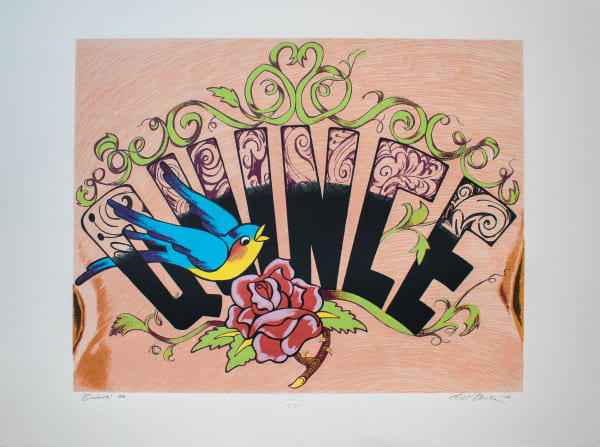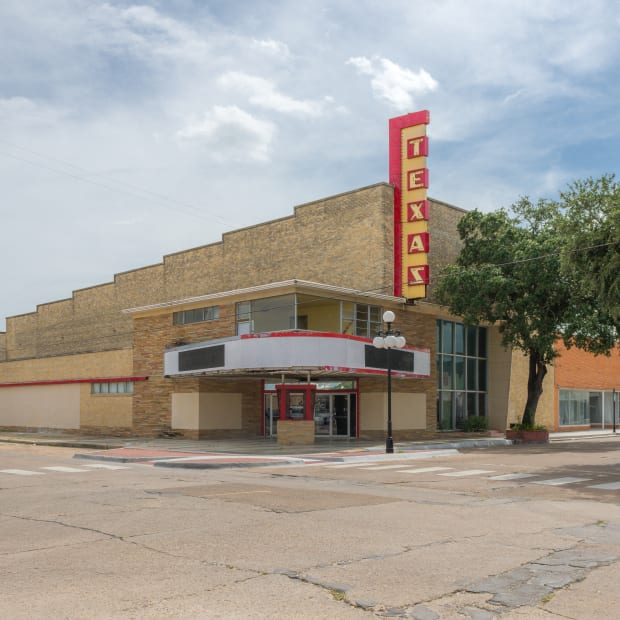-
Heirloom
-
Ruiz-Healy Art presents Heirloom, a group exhibition of works curated by Sarah Beauchamp and Yadira Silva. The exhibition will be on view at our San Antonio gallery from June 18 to August 9, 2025, with an opening reception on June 18 from 6:00 to 8:00 PM. Featured artists include Richard “Ricky” Armendariz, Jennifer Ling Datchuk, César A. Martínez, Celia Álvarez Muñoz, Katie Pell, Chuck Ramirez, Carlos Rosales-Silva, and Ethel Shipton, among others. Drawing from the Ruiz-Healy Art archive, the exhibition explores how cultural artifacts, moments, and gestures are embedded in visual language. Heirloom explores everyday objects, inherited materials, symbolic forms, and language to carry, reconstruct, and honor memory. Artists turn to material such as family photos, ritual items, and heirlooms for preservation and re-contextualization. Objects, sometimes humble and other times ornate, serve as traces of lived experiences.
-
 Chuck RamirezAbuela's Kitchen, 1996Digital Prints
Chuck RamirezAbuela's Kitchen, 1996Digital Prints
8 x 10 in (each print)
20.3 x 25.4 cm (each print)Edition of 6 plus 2 artist's proofsAbuela's Kitchen illustrates slow, intimate moments between grandson and grandmother, yet these scenes can be felt and understood by a universal audience. Lydia Ramirez, the artist's grandmother, was a meaningful link between his Mexican heritage, spending hours in the kitchen teaching him about traditional dishes. Nostalgia and care permeate through each image: the inside of her fridge, a busy stovetop, half-opened blinds. Ramirez assigns value to the mundane and elevates everyday scenes into a re-imagined still life.
-
-
Artists Gaby Collins-Fernandez and César A. Martínez utilize both personal and public photographs as a primary influence when creating work. For Martínez, a main source of visual information comes from personal snapshots, high school annual pictures, the media, and obituary pictures from the local paper. Collins-Ferandez looks inward and digitally manipulates family photos, selfies, and art historical images. Throughout her oeuvre, the same images are reworked, navigating themes of aesthetics and inheritance. Her work subverts expectations of images and the traditions of paintings, organizing and displaying memories and prompting us to consider how painting can render history and recollections.
-
Several artists use materiality as a direct conduit to memory, their work acting as tactile repositories. Carlos Rosales-Silva uses sand and acrylic paint to explore how identity is embedded in surfaces, textures, and forms. Rosales-Silva’s mixed media work with sand, crushed stone, and glass beads in acrylic on panel incorporates materials that speak to US-Mexico border culture, evoking place through abstracted forms.
-

-
Love Yourself Long Time explores the artist's layered cultural identity as a woman, a Chinese woman, and an American, while also reclaiming negative stereotypes often associated with Asian women and labor. Red doormats are found in front of almost every Chinese restaurant and business worldwide: These mats are markers for crossing thresholds, the objects below our feet that welcome or receive us as we work, spend time, desire, or consume. Red symbolizes good luck and fortune in Chinese culture, but is also synonymous with anger and passion. Additionally, Ling Datchuk reworks the well-known movie line “Me Love You Long Time” from Stanley Kubrick’s Full Metal Jacket, in which the director showcases Asian women in a negative light. The artist reworks the infamous cliche, promoting self-love and confidence.
-
 Katie PellNatural Iron, 2015Vintage engraved travel iron with fur and wood burning on mirrored pedestal10 x 12 x 12 in
Katie PellNatural Iron, 2015Vintage engraved travel iron with fur and wood burning on mirrored pedestal10 x 12 x 12 in
25.4 x 30.5 x 30.5 cm -
 Jennifer Ling DatchukLUCKY, 2021Porcelain and gilded silver on wooden table with mirrored plexiglass1.5 x 22 x 4 in (sculpture)
Jennifer Ling DatchukLUCKY, 2021Porcelain and gilded silver on wooden table with mirrored plexiglass1.5 x 22 x 4 in (sculpture)
3.8 x 55.9 x 10.2 cm (sculpture)
24 x 50.5 x 13.5 in (table)
61 x 128.3 x 34.3 cm (table)
-
-
In her works Crop Laborer- Green and Untitled (Woman/Red), Lina Puerta blends aesthetics with advocacy, pushing the conversation of land, labor, and resources forward. Part of her tapestry series, Latine/x Farmworkers in the US, the artist explains that it is important to highlight “the extreme physical labor and hardship demanded by industrial agricultural systems, contrasted against the poetic life cycle of the crops themselves.” Puerta places the farm workers center stage in both of her narrative scenes, highlighting the hands that are at the hub of our Western food system, honoring their connection to the land and the wisdom they inherit from it.
-

-
Language emerges as a key element in Heirloom. Armendariz explains how literature, tejano, conjunto, and country music inform his work: “A lot of the themes are about lost of unrequited love, loss of life and property.” Armendariz uses these themes and song lyrics as titles to his work, and, in the case of Your Wild Garden, he carves into a painting on birch wood with the words “Your Wild Garden is Where I Choose to Live, mas y mas y mas.”
-
 Ethel ShiptonQué, 2014Screenprint on Canson Classic Cream 90lb paper18 x 12 in
Ethel ShiptonQué, 2014Screenprint on Canson Classic Cream 90lb paper18 x 12 in
45.7 x 30.5 cm5 / 10 -
For artists Celia Álvarez Muñoz and Cisco Jiménez, familiar urban elements such as logos, advertisements, and everyday ephemera are catalysts for their practice. In his work Hand Deliver ASAP, Jiménez assembles a combination of imagery and text, ranging from beer logos to shopping tags, creating a chaotic relationship and devising a contemporary iconography for Mexico. Quince nods to a coming-of-age Latin American tradition of a girl turning fifteen. With this work, Álvarez Muñoz puts into practice the “visual shopping” of typical quinceañera imagery of tiaras, along with the additional visual vocabulary of contemporary tattoos, graffiti books, and sign painting.
-
 Carlos LimasStillness: Kingsville, TX, 2021Inkjet print on Epson Ultra Premium Archival Luster Paper16 x 16 in
Carlos LimasStillness: Kingsville, TX, 2021Inkjet print on Epson Ultra Premium Archival Luster Paper16 x 16 in
40.6 x 40.6 cmEdition of 5 -
 Michael MenchacaSpics 'N Dip, 2012Screenprint11 x 14 in
Michael MenchacaSpics 'N Dip, 2012Screenprint11 x 14 in
27.9 x 35.6 cm6 / 10
Heirloom: San Antonio
Past viewing_room

















